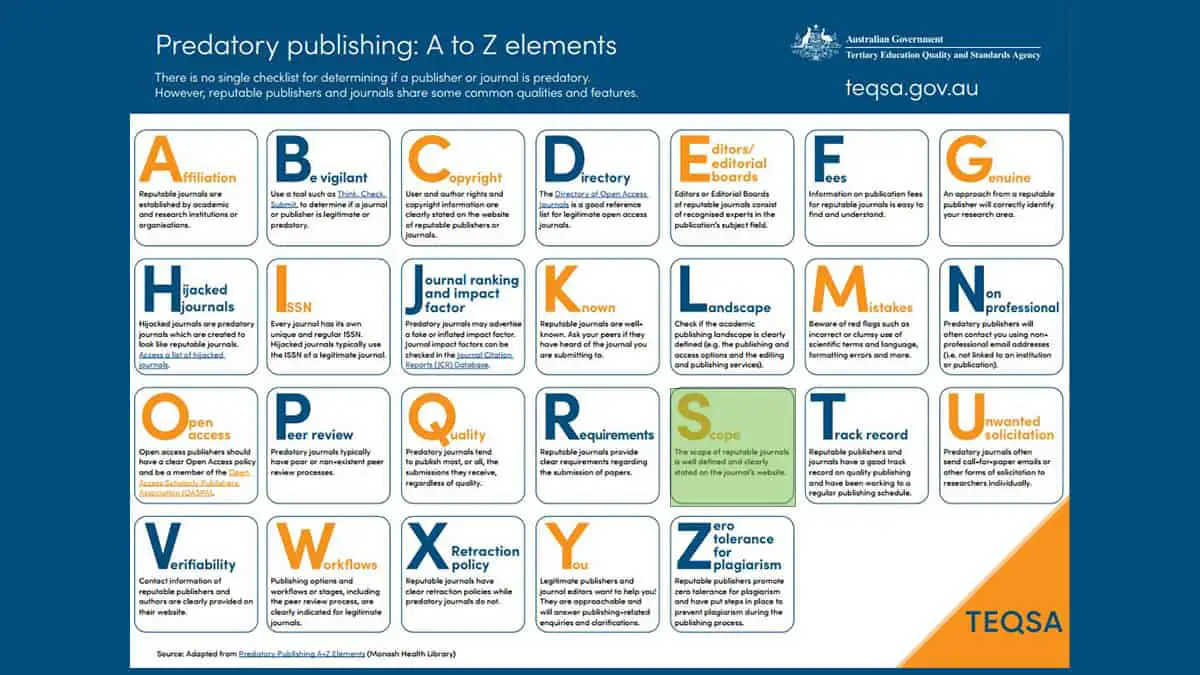TEQSA (Tertiary Education Quality and Standards Agency) have produced an A-Z of Predatory Publishing, which they tweeted (see figure).
You can also see the infographic on their web site.
We looked at the infographic, in a general sense, in an earlier article, but in this series we are focusing on specific letters, in this case S.
S is for Scope
The infographics from TEQSA says:
“The Scope of reputable journals is well defined and clearly stated on the journal’s web site.“
We have no argument with that.
Sometimes we find that some aims and scope, even for reputable journals, are a little long-winded, but they do try and be as clear and concise as they can. It is obviously in their interests to do this, as this is their calling card. It should be the aims and scope that attracts scholars to submit their articles.
There is obviously a balance to be struck as should not be too narrow (else they will limit the number of papers that will receive) but they do not want to be so broad that they receive papers that are outside the areas of the expertise of the editorial board and the reviewers that they can approach.
Predatory journals tend to have very wide aims and scope as they want to attract as many papers as possible.
What can you do when looking at the scope of a journal?
We would suggest a few relatively easy checks that you can do.
- Read the aims and scope. Is it well written? In our experience, high quality journals spend a lot of time getting their aims and scope “just right”. A balance between easy to read, written in an academic style, concisely written and supports the title of the journal.
- The breadth of the aims and scope: Many predatory journals simply make the aims and scope as wide as possible. Sometimes so wide that it borders on the ridiculous, in effect saying, “We will consider (and probably accept) a paper on almost any topic)“. If the aims and scope are too broad, it raise a red flag and you should carry out more checks and balances.
- Look at published papers: Do the papers that have been published match with the aims and scope of the journal, assuming they are not broad that it borders on the ridiculous (see point 2)? If papers have been published that are outside the scope of the journal this should be a warning sign that the journal may be predatory.
Concluding remarks
We’d like to thank TEQSA for creating their infographic. We find it very informative and, more importantly, it gives food for thought.
We hope, in the above article, that we have managed to present our view on the scope of the journal and how you might use it to check, or at least provide a warning, that a journal may be predatory.



